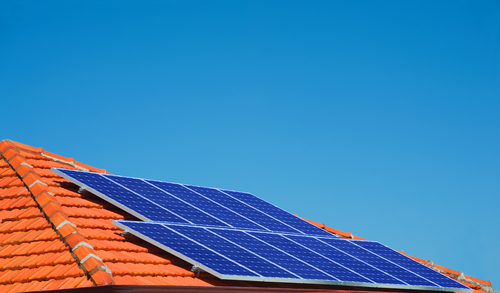The power of a solar panel is one of the key factors when sizing a photovoltaic system. In this article, we explain what solar panel power means, how it is measured, the different types available, and, most importantly, how to calculate how much power you need based on your energy consumption.
What is the power of a solar panel?
Solar panel power is measured in peak watts (Wp), which represents the maximum amount of energy it can generate under standard test conditions (STC). These conditions include a solar irradiance of 1000 W/m², a cell temperature of 25°C, and an air mass of 1.5. For example, a 400 Wp solar panel can generate up to 400 watts under ideal conditions.
Types of power and factors affecting performance
There are different types of power a solar panel can provide, which you should know:
- Nominal power (Wp): maximum power under standard conditions.
- Real power: the power obtained under real-life conditions, affected by temperature, orientation, shading, etc.
- Useful power: the power utilized in your system, considering losses from inverters, wiring, and other components.
How much power do you need?
To calculate the power you need, you must know your annual energy consumption. For example:
- Average household in Spain: 3,500 kWh/year.
If you install 400 Wp panels and each generates about 500 kWh/year, you will need approximately 7 panels.
The basic formula is:
Required Power (kWp) = Annual Consumption (kWh) / Annual Production per kWp
In Spain, the average production is 1,300–1,500 kWh per installed kWp.
Practical examples
Example 1: Family with a 5,000 kWh/year consumption
Estimated production: 1,400 kWh/kWp
Required power: 5,000 / 1,400 ≈ 3.57 kWp
Number of 400 Wp panels: 3,570 / 400 ≈ 9 panels
Example 2: Household with partial self-consumption of 2,000 kWh/year
Required power: 2,000 / 1,400 ≈ 1.43 kWp
Number of panels: 1,430 / 400 ≈ 4 panels
It is important to note that this production is annual, with more solar energy generated in summer than in winter, and more during midday hours than in the morning or evening.
Considering the above, it is crucial to synchronize solar generation with household or facility consumption to maximize self-consumption.
Frequently Asked Questions
What happens if I install more power than I need?
You can sell the excess to the grid or store it in batteries.
Do all solar panels have the same power?
No, panels range from 300 Wp to over 700 Wp, depending on the manufacturer and technology.
How do orientation and location affect performance?
South-facing orientation and proper tilt maximize production. In areas with less sunlight, more installed power is needed.
Personalized Recommendations
At Tienda Solar, we help you choose the right power according to your profile:
- High-consumption households: highly-efficiency panels and hybrid systems recommended.
- Partial self-consumption: standard panels with a good quality-price ratio.
- Off-grid installations: systems with batteries and higher-power panels.
Conclusion
The power of a solar panel is a fundamental factor for correctly sizing your installation. By knowing your consumption and the conditions of your home, you can calculate how many panels you need and which type suits you best.
At Tienda Solar, we provide expert advice and quality products to ensure your investment is efficient and profitable.

